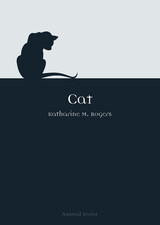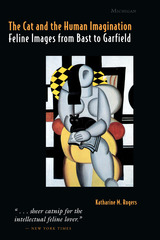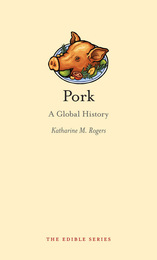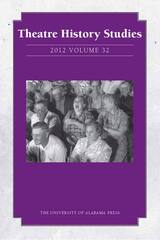4 books about Rogers, Katharine M.

Cat
Katharine M. Rogers
Reaktion Books, 2006
According to ancient Egyptian lore, the goddess Bast, who protected her worshippers from disease and hard luck, had the figure of a woman and the head of a cat. Egyptians loved their feline companions, including them in family portraits, mummifying them alongside their owners, and creating exquisite works of sculpture around their graceful forms.
Four thousand years later, the cat continues to charm us. Katharine M. Rogers traces our relationship with this curious creature in Cat, an entertaining look at one of the most popular pets in the world. From the domestic cat’s emergence in ancient Egypt to its enormous popularity in the contemporary United States, Rogers uncovers the feline’s cultural history in all its numerous forms: rat-catcher, witch’s familiar, and even the inscrutable creature that inspired Lewis Carroll and Edgar Allan Poe. As Rogers demonstrates, our fascination with cats lies in their uncanny ability to embody just about any character—from sweet to ferocious, affectionate to independent, eerie to elegant.
Cat will be relished by anyone who appreciates these lovable companions and their amazing ability to bring joy to our lives.
Four thousand years later, the cat continues to charm us. Katharine M. Rogers traces our relationship with this curious creature in Cat, an entertaining look at one of the most popular pets in the world. From the domestic cat’s emergence in ancient Egypt to its enormous popularity in the contemporary United States, Rogers uncovers the feline’s cultural history in all its numerous forms: rat-catcher, witch’s familiar, and even the inscrutable creature that inspired Lewis Carroll and Edgar Allan Poe. As Rogers demonstrates, our fascination with cats lies in their uncanny ability to embody just about any character—from sweet to ferocious, affectionate to independent, eerie to elegant.
Cat will be relished by anyone who appreciates these lovable companions and their amazing ability to bring joy to our lives.
[more]

The Cat and the Human Imagination
Feline Images from Bast to Garfield
Katharine M. Rogers
University of Michigan Press, 2001
The Cat and the Human Imagination is a fascinating historical survey of the changing cultural attitudes towards cats and the myriad ways that they have been depicted in literature and art. Feline images have permeated civilization since the time of the ancient Egyptians, and during this time the status of the cat has changed dramatically. The book examines the changing images-- fertility goddess, sly little predator, agent of Satan, avenging witness, aristocrat, friend, spirit of the home, bloodthirsty killer, seductive female--and relates them to the contexts in which they arose. It also analyzes how human attitudes towards cats seem to have evolved in parallel with attitudes towards animals, towards authority, and towards gender.
Western literature and visual art have reflected this change, developing from bare sketches to richly varied expressions of feline personality and human interaction with cats. Katharine M. Rogers seeks out the cats who make appearances in an impressive range of literary and artistic works, providing the first critical look at the symbolic functioning of cat characters in Poe's "The Black Cat," Dickens's Bleak House, and Zola's Therese Raquin, among other literary works. The historical and artistic range covered is impressive, creating a rich compendium that is the ideal book for the cat lover seeking a refreshingly substantial and scholarly work about this fascinating animal.
"This book is a classic-- something every cat-loving intellectual will have to own. (No one, of course, ever really owns a cat--but everyone should own this book.) It's the kind of book you want to quote from at the vet's, or cocktail parties, or whenever you get the urge to convert a dog lover to the true faith." --Emily Toth, Louisiana State University
Katharine M. Rogers is Professor Emerita of English, City University of New York. Her previous books include Feminism in Eighteenth-Century England and Frances Burney: The World of "Female Difficulties."
Western literature and visual art have reflected this change, developing from bare sketches to richly varied expressions of feline personality and human interaction with cats. Katharine M. Rogers seeks out the cats who make appearances in an impressive range of literary and artistic works, providing the first critical look at the symbolic functioning of cat characters in Poe's "The Black Cat," Dickens's Bleak House, and Zola's Therese Raquin, among other literary works. The historical and artistic range covered is impressive, creating a rich compendium that is the ideal book for the cat lover seeking a refreshingly substantial and scholarly work about this fascinating animal.
"This book is a classic-- something every cat-loving intellectual will have to own. (No one, of course, ever really owns a cat--but everyone should own this book.) It's the kind of book you want to quote from at the vet's, or cocktail parties, or whenever you get the urge to convert a dog lover to the true faith." --Emily Toth, Louisiana State University
Katharine M. Rogers is Professor Emerita of English, City University of New York. Her previous books include Feminism in Eighteenth-Century England and Frances Burney: The World of "Female Difficulties."
[more]

Pork
A Global History
Katharine M. Rogers
Reaktion Books, 2012
“Pork. The Other White Meat.” The well known National Pork Board slogan doesn’t begin to describe the many types of meat that fall under the umbrella of “pork.” The most versatile of meats, pork ranges from the rich, delicate succulence of a roast loin to the dry, salty assertiveness of pancetta and bacon. Since the Roman Empire, it has also been the most widely eaten meat—it formed the high point of Roman feasts and was the mainstay of the traditional working class diet in Europe and North America.
Pork: A Global History follows the transition of pork from fashionable food to popular fare while also exploring the many edible parts of a pig and ways they are prepared. Katharine Rogers depicts how pork stopped being featured at aristocratic banquets and in high-end cookbooks as it became associated with the lower and middle classes. She explains how European settlers brought pork to the Americas and that barrel pork, kept submerged in a barrel of brine, was a staple of working class people in the United States. While roast suckling pig remains the most luxurious form of pork, Rogers reveals that people also use pig’s blood to make black puddings, its tail to flavor soups and stews, and its fat for frying and as a pastry shortening. Beautifully illustrated and filled with recipes from around the world, Pork will be a necessary addition to the bookshelf of any lover of bacon, sausage, and pork chops.
[more]

Theatre History Studies 2012, Vol. 32
Edited by Rhona Justice-Malloy
University of Alabama Press, 2012
Theatre History Studies, currently edited by Rhona Justice-Malloy, is a peer-reviewed journal of theatre history and scholarship published annually since 1981 by the Mid-American Theatre Conference (MATC), a regional body devoted to theatre scholarship and practice. The conference encompasses the states of Illinois, Iowa, Nebraska, Kansas, Missouri, Minnesota, North Dakota, South Dakota, Wisconsin, Indiana, Michigan, and Ohio. The purpose of the conference is to unite persons and organizations within the region with an interest in theatre and to promote the growth and development of all forms of theatre.
Contributors
Penny Farfan / Victor Holtcamp / Lisa Jackson-Schebetta / Richard
L. Poole / Bill Rauch / Thomas Robson / Marlis Schweitzer / Virginia
Scott / Christine Woodworth
Penny Farfan / Victor Holtcamp / Lisa Jackson-Schebetta / Richard
L. Poole / Bill Rauch / Thomas Robson / Marlis Schweitzer / Virginia
Scott / Christine Woodworth
[more]
READERS
Browse our collection.
PUBLISHERS
See BiblioVault's publisher services.
STUDENT SERVICES
Files for college accessibility offices.
UChicago Accessibility Resources
home | accessibility | search | about | contact us
BiblioVault ® 2001 - 2024
The University of Chicago Press









